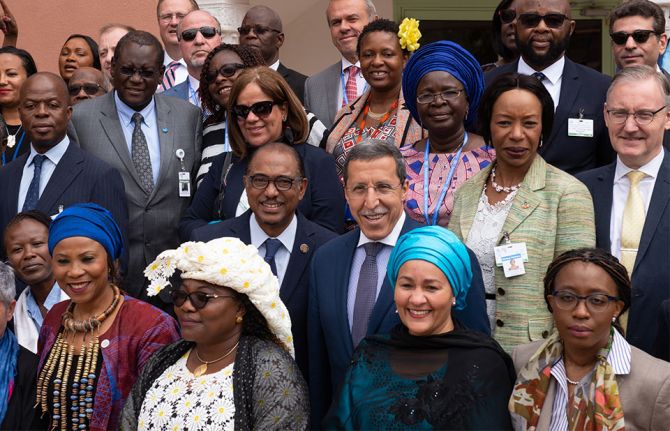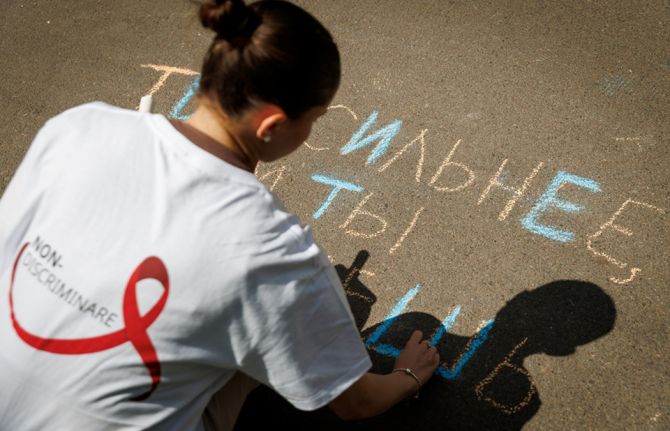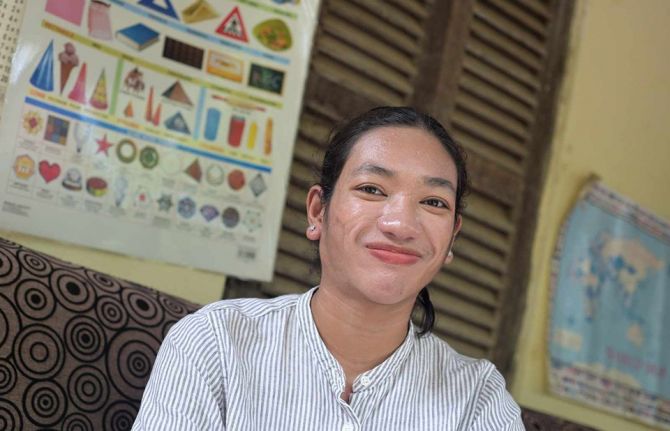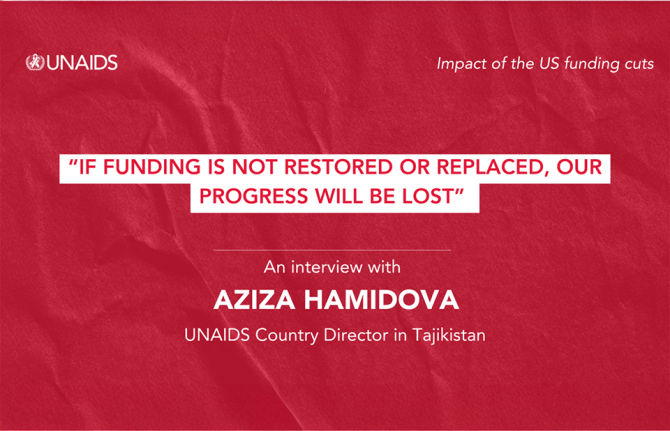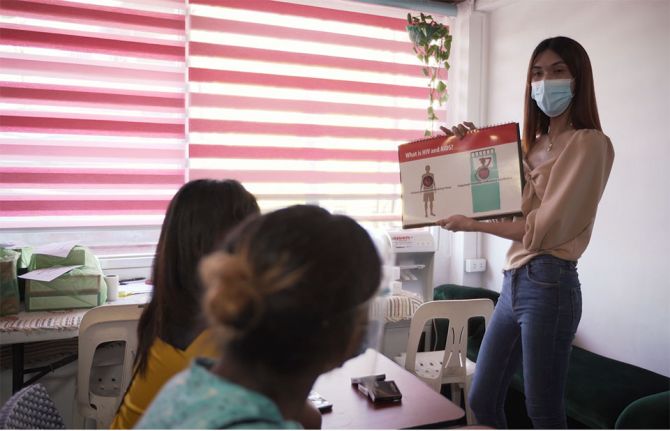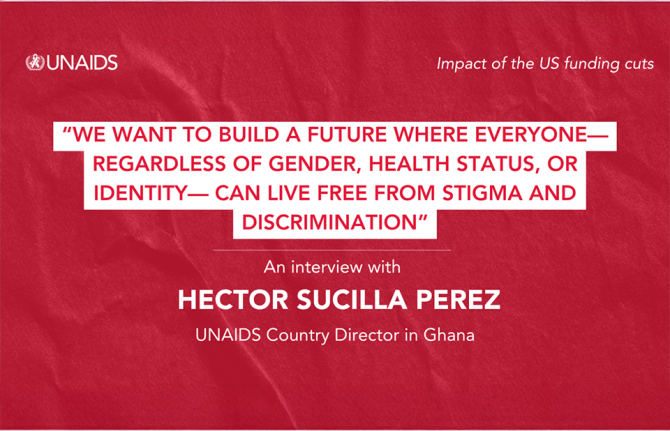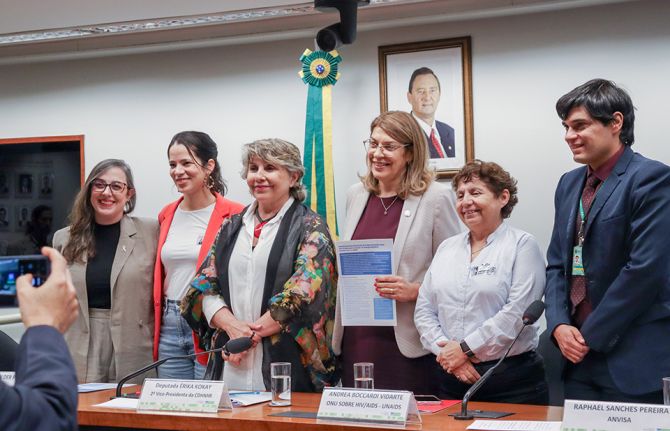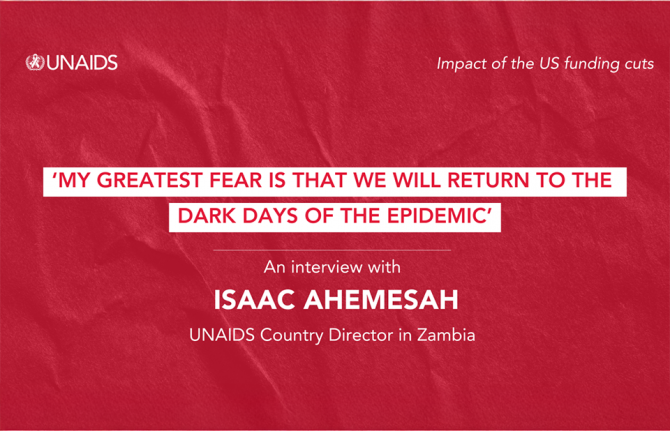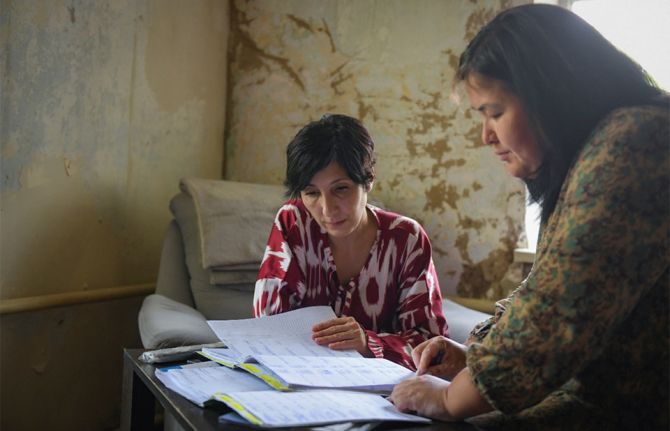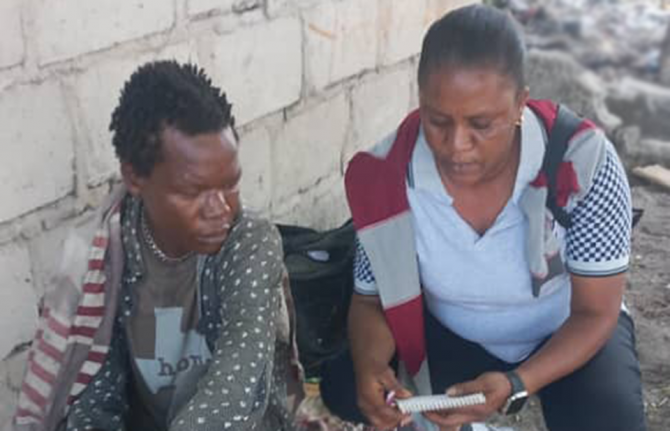

Feature Story
Using sports to combat gender stereotypes and learn about HIV
30 July 2025
30 July 2025 30 July 2025This story first appeared in the UNAIDS Global AIDS Update 2025 report.
Marouane Abouzid grew up in Casablanca, Morocco, where many boys act like bullies and sex is taboo. That changed when he joined the project Sport Is Your Protection, where he gained knowledge about gender equality and health. “The training on HIV awareness led by UNAIDS and Tibu Africa was a transformative experience in the sense that I saw how sports can be an effective way to get a message out,” the 25-year-old says. “It also gave me essential skills like communicating clearly and active listening.”
He enjoyed the project so much that he trained to lead sports activities and participate in other sessions. “I talk openly about what I have learned. I encourage my friends to get tested for HIV and encourage people to respect others,” he says, excited about becoming a role model for his peers.
Marouane describes the activities as a safe space to discuss all sorts of issues that young people face in Morocco, such as poverty, unemployment and a patriarchal system.
Marouane is not alone. Assia Ezzahraoui, a participant in the Tibu Africa sports vocational school programme, joined the weeklong sexual education awareness meeting. “The informative sessions gave me new insights into symptoms, prevention methods and available treatments,” she says. Assia feels more secure about how to protect herself and her friends.
Tibu Africa was founded in 2011 and aims to bring the programme across different cities in Morocco. UNAIDS joined with Tibu Africa in 2024. “This first partnership with UNAIDS Morocco mobilized young people around issues to transcend barriers and create opportunities for dialogue and awareness,” says Mohamed Amine Zariat, President of Tibu Africa. “We hope this first step will serve as a springboard for future, even more ambitious initiatives.”
An estimated 24 000 [21 000–26 000] people are living with HIV in Morocco, and nearly 40% of these are women. Although the prevalence of HIV is relatively low in Morocco, vulnerable populations such as sex workers, gay men and other men who have sex with men and people who inject drugs are particularly at risk. Moroccan youth represent more than 30% of the total population, but a quarter of people aged 15–24 years have no job and lack education and training—young women are particularly hard hit.
Houssine El Rhilani, UNAIDS Country Director in Morocco, is aware of this. He believes the collaboration with Tibu Africa combining sport, education and awareness-raising can empower young people. “We were able to reach young people not only with information, but also through experience, providing them with concrete tools to become prevention ambassadors in their own communities,” he says. “We cannot end AIDS without prioritizing future generations.”
Global AIDS update 2025
Region/country

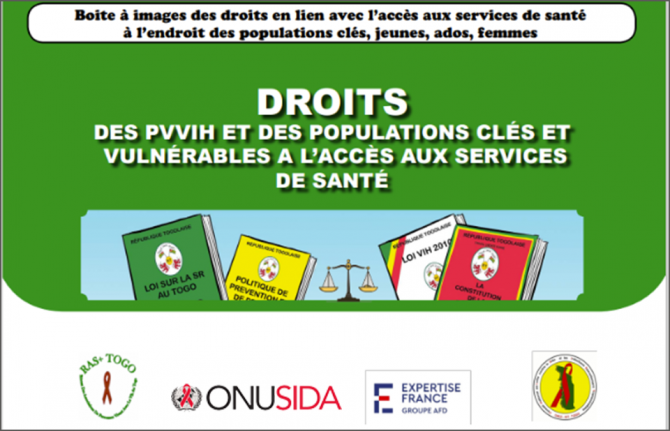
Feature Story
Reducing stigma in health-care settings and reforming the law: a double hurdle in western and central Africa
28 July 2025
28 July 2025 28 July 2025This story first appeared in the UNAIDS Global AIDS Update 2025 report.
In seven countries in western and central Africa surveyed in 2023, more than 12% of people living with HIV aged 18–24 years reported avoiding health centres for care because of their HIV status.
Whether it is a refusal of care, humiliating comments or disclosure of their status, many people described feeling alienated. Last year, with funds from Expertise France and the help of UNAIDS and partners, a pilot was launched to raise awareness of stigma in Cameroon, Côte d’Ivoire, Senegal and Togo.
Training in the Looking In, Looking Out (LILO)* approach raised awareness among 150 health professionals in Senegal and 97 in Togo about sexual diversity, gender-based violence and respect for human rights. In Kara, northern Togo, a visual digital tool (named “image boxes”) has been designed with communities to raise awareness of health and HIV.
When individuals and communities know their rights, they are empowered to take control of their own health and to hold service providers accountable. This is one of the key messages of this tool used by the Network of People Living with HIV (RAS+ Togo). A total of 300 young people attended educational health sessions in the Central African Republic. In Benin and the Central African Republic, the project focused on legal reform, with the involvement of parliamentarians, including members of the women’s caucus in both countries. Legal texts, a draft decree and a decree have been drafted in the Central African Republic. In Benin, the work also focused on advocacy for the adoption of the new HIV bill.
“We must make the link between HIV and gender-based violence. The law must protect women in all spheres, especially including health,” said Huguette Bokpe Gnacadja, President of the National Institute for Women in Benin.
The year-long partnership has enabled action to be taken at the individual level (rights literacy), organizational level (paralegals in community organizations, training for community actors), interorganizational level and national level (legal reform).
In the next year, UNAIDS wants to further improve access to inclusive human rights-based HIV services for people from key populations, adolescents, girls and young women in the region.
“The fight against HIV will not be won in laboratories, but in the power relations between caregivers and those receiving care, between the state and its citizens,” said Fatou Sy, a UNAIDS focal point in the region who oversaw the projects in the six countries. “We have more work to do.”
*Looking In, Looking Out (LILO) refers to a process of internal and external reflection aimed at improving understanding of key populations and their access to health services. The approach seeks to strengthen the knowledge of intermediaries in the response to stigma surrounding key populations, with a view to encouraging their involvement in creating a supportive environment.
Global AIDS update 2025

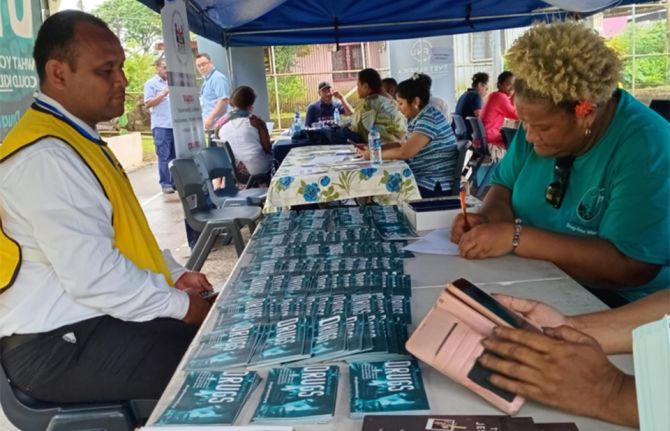
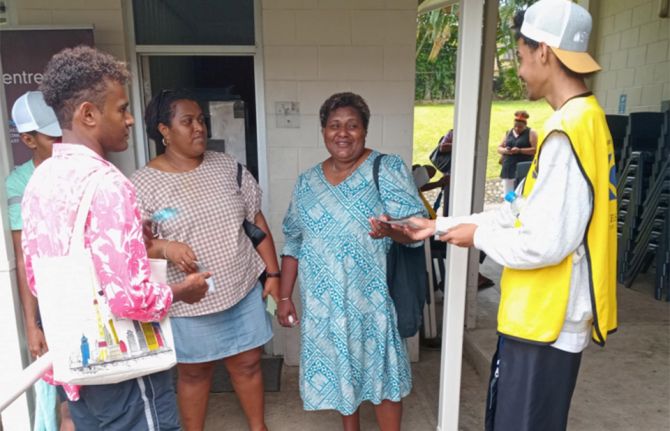

Feature Story
As HIV infections soar due to injecting drug use, harm reduction should be a priority in Fiji
25 July 2025
25 July 2025 25 July 2025This story first appeared in the UNAIDS Global AIDS Update 2025 report.
Kalesi Volatabu, founder of DrugFree World Fiji, breaks the ice at drug awareness sessions by sharing her shocking story.
When she was 13, her parents sent her to relatives in Sydney for what she thought was a vacation. In fact, they expected her to stay there, work and send money back to them in Fiji. She ended up on her own with no passport, no schooling and no care. She spent three years on the streets. Boyfriends abused her. She was raped twice. She attempted suicide three times. By the age of 17, she was a mother.
“Marijuana did nothing for me,” she says. “My drug of choice was meth. I needed to go to the hardest drug to numb the pain I was going through ... to fill the void. When I share this in Fiji today in villages, schools and churches, it gives people the power to say, ‘This is what happened to me.’ It is a healing journey.”
Kalesi leads the one community organization exclusively committed to addressing the drug use fuelling Fiji’s ballooning HIV epidemic.
Since 2014, number of new HIV infections in Fiji has risen by an alarming 10-fold. UNAIDS estimates that in 2014, there were fewer than 500 people living with HIV in Fiji. Just 10 years later, that number was 5900 [4500–8900]. In 2024, only 36% [27–54%] of people living with HIV in Fiji were aware of their HIV status, and only 24% [18–36%] were receiving treatment.
Preliminary data for 2024 from the Ministry of Health show that among people newly diagnosed with HIV who are currently receiving antiretroviral therapy, half contracted HIV through sharing needles.
Responding to the sharp increase in new diagnoses, the Government of Fiji declared an HIV outbreak in January 2025. The HIV Outbreak Response Plan and the previously announced Counter Narcotics and HIV Surge strategies call for the introduction of harm reduction programmes for people who inject drugs. Currently there are none.
Although there is agreement in principle with the introduction of needle–syringe programmes, moving towards implementation has been more challenging. “We still need to raise awareness,” says Kalesi. “It is not just about giving out needles. It is about education. But there are so many myths and misconceptions. We have to educate the leaders first. When the indigenous chiefs call, people will follow. Then there are the churches. Last but not least, the Government.”
Medical Services in the Pacific (MSP) Fiji is prepared to implement a needle–syringe programme. The non-profit-making organization provides a broad range of sexual and reproductive health services. It is already supporting the scale-up of much needed HIV prevention, testing and linkages to care. Beyond its clinics in Labasa, Lautoka and Suva, it deploys an outreach team of clinicians and counsellors to the field. A mobile clinic goes to hotspot areas to provide a package of HIV and noncommunicable disease services in areas with high levels of injecting drug use.
“Since we started providing point-of-care (rapid) screening last year, the numbers have continued to escalate,” says MSP Fiji Country Director, Railala Nakabea. “It is not only in the cities and towns. We are also seeing positive cases in rural communities. Most of the cases we detect are among people who inject drugs.”
MSP Fiji Medical Officer, Kesa Tuidraki, reiterates the importance of harm reduction alongside longer term and more widely accepted plans for the construction of a drug rehabilitation facility. “It is not only HIV,” she says. “We also have increasing hepatitis C infection, which is even more easily spread through sharing injecting equipment. We need to have harm reduction programmes in place as soon as possible. Rehabilitation does not address the immediate public health emergency.” She acknowledges the importance of partnering with an organization of people with lived experience to more effectively serve the community of people who use drugs.
For Kalesi Volatabu, it is critical that stakeholders work together to design a tailored approach. “We definitely need harm minimization strategies, but we have to contextualize the programmes. What would work in the western context will not work in Fiji. You need to speak the language of your audience. It must be driven by the people and owned by the people.”
Global AIDS update 2025
Region/country


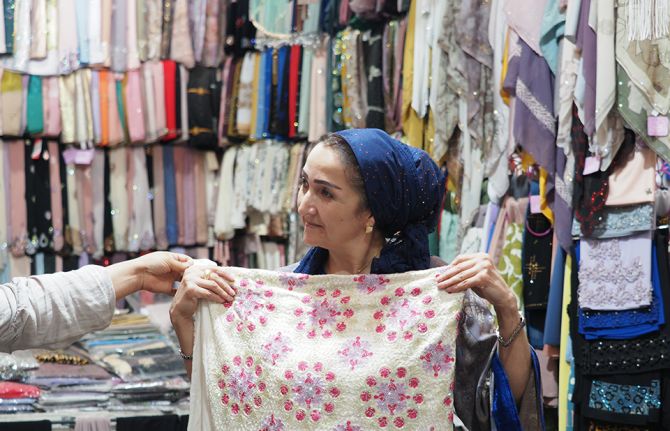

Feature Story
Power to earn and live—overcoming inequalities and supporting women living with HIV in Tajikistan
23 July 2025
23 July 2025 23 July 2025This story was first published in the UNAIDS Global AIDS Update 2025 report.
The day for Safargul begins at 04:00 and rarely ends before midnight. She juggles the demands of raising four children, tending a vegetable garden and managing the household in the small city of Kulyab in Tajikistan. Twice a week, she works at the local AIDS centre as a peer consultant. She supports women newly diagnosed with HIV, helping them understand the importance of starting treatment and not giving up hope.
Safargul has been living with HIV since 2006. No one in her community knows her HIV-positive status. “It would mean the end of normal life,” she says. “People would exclude me from gatherings, from everyday conversations.”
Her husband and eldest son were migrant workers abroad—just like the husbands of many of the women she now supports. “I see young women infected by their husbands and refusing treatment because they fear someone in the family might find out. They do not know enough, and they have no power to protect themselves,” she says.
Safargul is worried that most of these women are economically dependent on their husbands and their families. In Tajikistan, one of the poorest countries in central Asia, nearly 30% of gross domestic product comes from remittances, with many men migrating to Kazakhstan or the Russian Federation for work. According to the National AIDS Center, in 2015 one in eight new HIV cases was linked to male labour migration, but that figure rose to one in three by 2023. As a result, the risk of HIV infection among women—especially in rural communities—has crept up.
Takhmina Haidarova knows this risk firsthand. She was raised in a traditional household and then married a man who worked abroad and rarely came home. After the loss of their child, she hoped another pregnancy would ease the pain— but during a routine check-up, she learned she was living with HIV.
“I did not even know HIV existed in Tajikistan,” she recalls. Her husband rejected her, and his family blamed her after he died of an AIDS-related illness. “I had no knowledge, no support, and no one to turn to.”
Takhmina now leads the Tajikistan Network of Women Living with HIV. With support from UNAIDS, and together with a local team of researchers, the Network conducted a time-use survey in 2024, which revealed the systemic inequalities facing women living with HIV. Nearly 80% are homemakers and spend more than eight hours a day on unpaid labour. Most need permission from their husbands to visit a health facility. For many women, autonomy over health decisions comes only after divorce or widowhood. Tragically, 97% of women living with HIV in Tajikistan hide their HIV-positive status, even from family members.
“My mother-in-law knows her son infected me,” one woman says, “but still she will not accept a cup of tea from me.”
For Zarina from Tursunzade, change began with business skills training and a small grant from UNAIDS and UN Women. After leaving an abusive marriage and becoming a single mother, she built a sewing business that now employs women living with HIV. She also teaches women affected by HIV—including those in remote rural areas—how to start their own small sewing businesses.
“Thanks to this support, I became independent—and I can help others who were abandoned like I was,” she says.
UNAIDS Country Director in Tajikistan, Aziza Hamidova, refers to the recent gender assessment study led by UNAIDS, which concluded that restrictive gender norms, entrenched practices, stigma, discrimination and gender-based violence hinder timely access to health services, including for HIV. “The HIV response must reflect the real lives of women,” she says. “It must support their right to grow, earn and live with dignity.”
Progress in supporting HIV services for women is fragile. Funding cuts as small as 10–20% could reverse years of gains. More than 60% of the HIV response in Tajikistan is funded by the Global Fund and PEPFAR with the United States Government, and only 37% is funded domestically. UNAIDS and partners are worried that funding cuts may deepen deprivation and perpetuate stigma, leaving women living with HIV to bear the burden of survival and exclusion. “Investing in women’s health, safety and economic power is not just smart—it is urgent,” Aziza says.
Global AIDS update 2025
Region/country

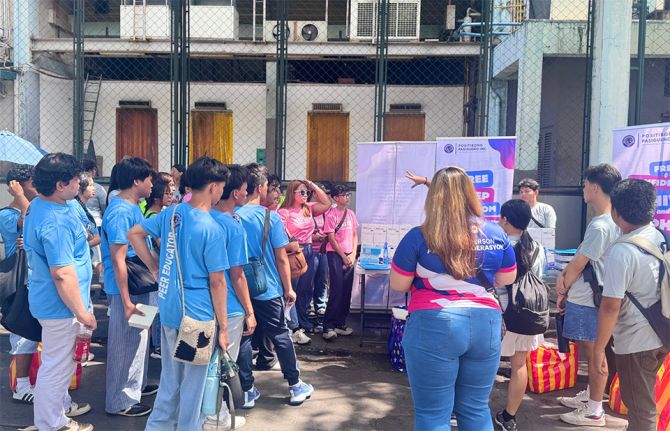
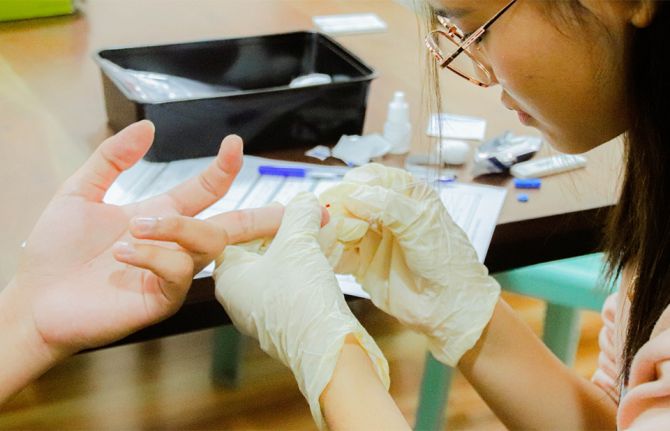
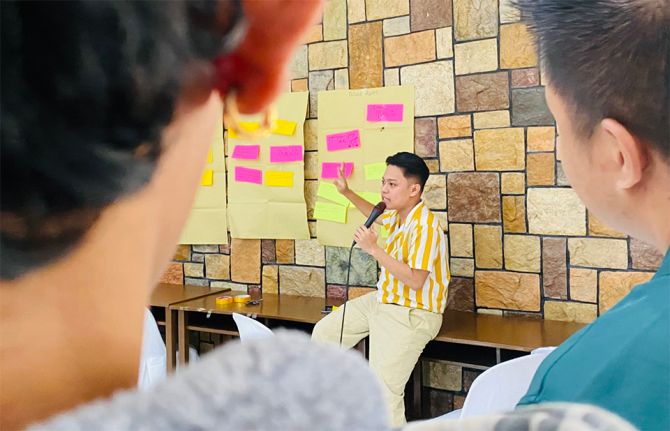
Feature Story
Funding cuts undermine community-led innovations in the Philippines
21 July 2025
21 July 2025 21 July 2025This story was first published in the UNAIDS Global AIDS Update 2025 report.
“We will focus on treatment!” This is the reassurance HIV advocates say they have received from the Government of the Philippines in the aftermath of United States funding cuts to the Philippines HIV response.
These commitments are critical to scale up treatment access for the 60% of people living with HIV in the Philippines who are not currently receiving antiretroviral therapy. But far more is needed to achieve epidemic control in a country that has seen a six-fold increase in new infections since 2010.
In 2024, three to four people were infected with HIV every hour in the Philippines. Of particular concern is that almost half of them are young people aged 15–24 years. Programmes to reach young key populations, especially young gay men and other men who have sex with men, are urgently needed.
“We are seeing a trend where younger and younger people are getting infected,” says Russell Elloso of Network Plus Philippines, the umbrella organization of people living with HIV. “And we are not seeing a plateau—the number of cases is still increasing. That means the current approaches are not working.”
Through PEPFAR, the United States invested primarily in supporting HIV prevention strategies and community-led work to ensure services reached people most in need.
One of the programmes that has been cancelled as a consequence of the funding cuts is the EpiC-supported Free to be YOUTH HUB. This innovative think tank developed culturally resonant HIV prevention and treatment support approaches specifically for young people. It ran 12 projects, including an academy for social media influencers, an innovative approach to HIV education, and a peer-led project to re-enrol youth who had stopped HIV treatment.
“We have a progressive HIV policy in the Philippines and a comprehensive sexual and reproductive health policy, but they are not youth-focused and youth centred,” explains Aaron James Villapando, Co-chair of Free to be YOUTH. “The value of this initiative was having an advisory board focused on promoting a youth-led response. Young people can lead, and we need to be at the frontlines of the HIV response for it to be effective.”
In the aftermath of the funding freeze, the organization has ramped up efforts to engage the private sector and foundations. A key priority has been to work with local government and local youth councils to secure more decentralized and sustainable funding for HIV programmes in the respective provinces. But activists are finding it particularly difficult to secure support for interventions for young key populations.
“Our Secretary of Health has assured the public that they will scale their current initiatives with a goal of not being so dependent on international funding. But the reality is that some of the community-led projects that are most needed are not priorities,” Mr Villapando says.
Stakeholders are lobbying the Department of Health to expand modern prevention methods and community-led service delivery, which were traditionally funded by external donors. These donor investments specifically addressed critical programmatic gaps, including youth programming and increasing access to modern testing and prevention options.
Despite the Government procuring almost all HIV commodities, including PrEP, challenges remain around funding and systems for community-led responses, and the introduction of novel interventions such as long-acting PrEP, the dapivirine vaginal ring and selftesting. Advocates are lobbying policy-makers to develop and implement a social contracting mechanism so the community can continue to provide services without support from the Global Fund to Fight AIDS, Tuberculosis and Malaria (Global Fund) and PEPFAR.
Global AIDS update 2025
Region/country
Related

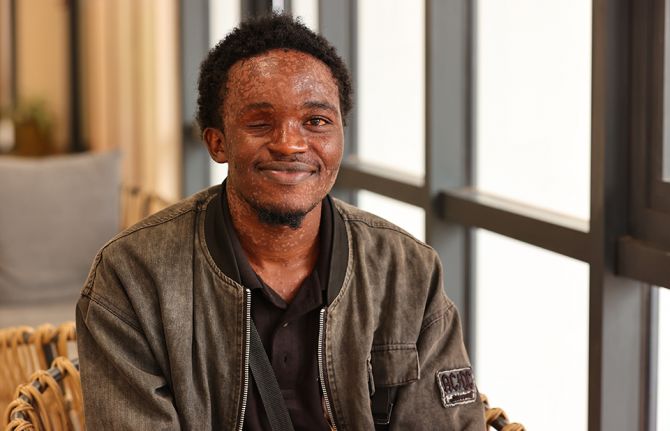
Feature Story
A lifeline interrupted in Uganda— why community health systems matter
18 July 2025
18 July 2025 18 July 2025This story was first published in the UNAIDS Global AIDS Update 2025 report.
In early 2025, 22-year-old Jokpee Emmanuel arrived at Reach Out Mbuya in Kampala, Uganda, expecting to attend the Friends Forum—a safe space for young people to gather, share and support each other. Instead, he was met with a sign on the gate: “Due to the suspension of United States funding, Reach Out Mbuya will be closed for 90 days. We regret the inconvenience caused.”
The Reach Out Mbuya community health initiative is not just a health facility. It is a lifeline. For years, it served Uganda’s most vulnerable communities, offering care that goes far beyond medicine. For Jokpee, who was born with HIV, Reach Out provided access to antiretroviral therapy, emotional support, school tuition and dignity. “Reach Out was like a second home,” he says. “They did not just give me medicines. They cared for me and reminded me that I am more than my diagnosis. I could live a full life.”
The closure followed a suspension of United States funding through PEPFAR, which had long supported community-led HIV responses in Uganda. The impact was immediate and severe. Community-led and community-based centres such as Reach Out Mbuya are central to public health in many low-resource settings. They offer holistic, personcentred services catered to local realities. They respond to the social, emotional and economic realities of people’s lives. These systems have been essential to the global HIV response, driving down infections and improving quality of services and life, especially among marginalized groups.
Jokpee was forced to seek care at an overcrowded Government facility. He waited six hours, only to be told antiretroviral medicines were out of stock and to return the following week. “A week without antiretroviral medicines! That is how resistance develops. That is how people die,” he says.
He eventually received a one-month supply of medicines, but the fear of another stockout remained. Although the Government of Uganda worked to fill the gap through national health facilities, it could not match the reach or personal connection of community-based programmes.
In the weeks that followed, Reach Out Mbuya managed to reopen, with support from a PEPFAR-funded programme called Kampala HIV Project. Most staff returned, restoring most of the centre’s core services. The number of clients accessing the centre is slowly increasing but is still below previous levels.
Jokpee’s story is a warning. When community-led and -based systems lose support, people fall through the cracks. If it were not for places like Reach Out Mbuya, Jokpee and his peers would be at risk of being left behind in the HIV response.
Sustained investment in community-led responses is the only way forward if we are to end AIDS as a public health threat by 2030.
Global AIDS update 2025
Region/country



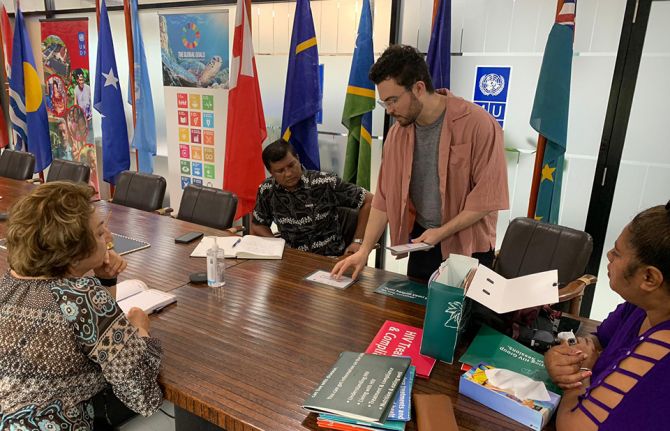
Feature Story
Crowdfunding for community-led services in Fiji’s fast growing HIV epidemic
14 July 2025
14 July 2025 14 July 2025“There is no such thing as peer support here,” says Mark Shaheel Lal, founder of Living Positive Fiji. “We are starting from zero.”
When other parts of the world were wrestling with soaring HIV rates during the 1990s and early 2000s, Fiji was hardly affected. With a population of under one million, HIV remained under the radar in the South Pacific island chain.
But there has been an exponential increase in recent years. Since 2014, the number of new HIV infections in Fiji has risen ten-fold. Last year the number of newly diagnosed people tripled from 2023 levels
In January the Government of Fiji declared an HIV outbreak in response to the sharp increase in new diagnoses. Although its HIV Surge Strategy seeks to rapidly expand HIV testing and treatment, most people still aren’t accessing the services they need.
Last year just a quarter of people living with HIV in Fiji were receiving antiretroviral therapy. Concerningly, a third of those who have been diagnosed are not on treatment.
Mr Lal is among a group of stakeholders that is working not only to spread the word that HIV medicines work, but to support people to access care. He is also among the few people living openly with HIV in Fiji.
“There is this idea that you come from a small island and everyone knows each other, so the stigma here is high. I want to help reduce that,” he explains.
Dean Cassano is a Senior International Health Project Officer at Burnet Institute, an Australian public health research organization with a focus on underserved communities.
“The intervention we are proposing is a community-led response and what that looks like is peers counselling other peers. Somebody living with HIV is enabled, trained and mentored with the skills and methodology to counsel other people living with HIV. The core objective is to improve treatment adherence,” Mr Cassano explains. “We know that when someone talks to a peer they can ask about misconceptions, fears, advice on how to have a baby or how to tell a partner. They would be getting holistic support, so they know there is a way through.”
At present, people who learn they are HIV-positive in Fiji are referred to one of three sexual health clinics. Many simply never show up.
“They are too embarrassed… too scared,” Mr Lal says.
The new approach would immediately introduce newly diagnosed people to a peer counsellor. Peer counsellors would also play a key role in supporting clients as they access treatment, contact tracing, and reaching out to those who have stopped coming to the clinic.
The Institute had worked on an HIV Peer Counselling Toolkit for neighboring Papua New Guinea (PNG) where new infections are also rising dramatically. Together with Igat Hope, PNG’s main people living with HIV organization, they developed culturally specific modules. The Australian Government funded this initiative as part of the Sexual Reproductive Health Integration Project.
“There are ten topics that someone newly diagnosed with HIV needs to know about how to live well,” Mr Cassano explains.
Burnet has collaborated with partners in Fiji to adapt the toolkit, for example including local specifics in sections on food and alcohol. Fiji requires an additional module on harm reduction. Among newly diagnosed people who are currently receiving antiretroviral therapy, half contracted HIV through injecting drug use.
Now comes the next step—mobilizing and training these peer counselors. With no resources immediately available, the partners raised more than AUD$146000 through a crowdfunding campaign which ended in June. Now the training begins.
“This began as a result of us seeing a need and hearing from local partners that they want this but realizing that there is no money. The long-term plan is that this peer support is embedded into the national HIV response and is a core tenet for post-diagnosis support. Our hope is that it is sustained but first it must start,” Mr Cassano said.
Region/country

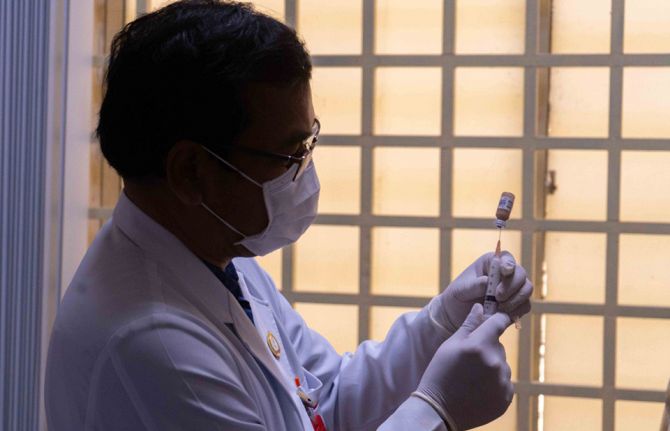

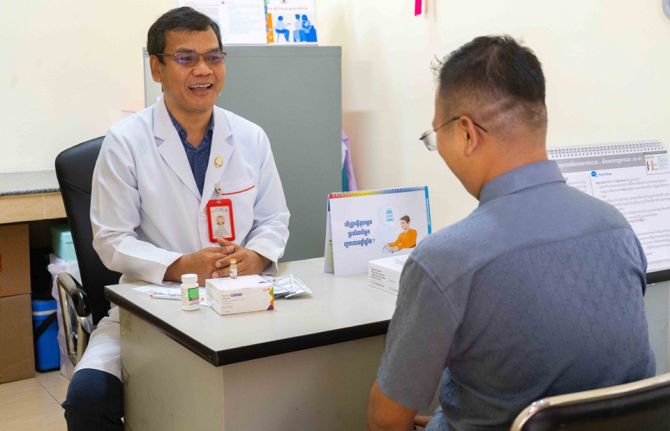
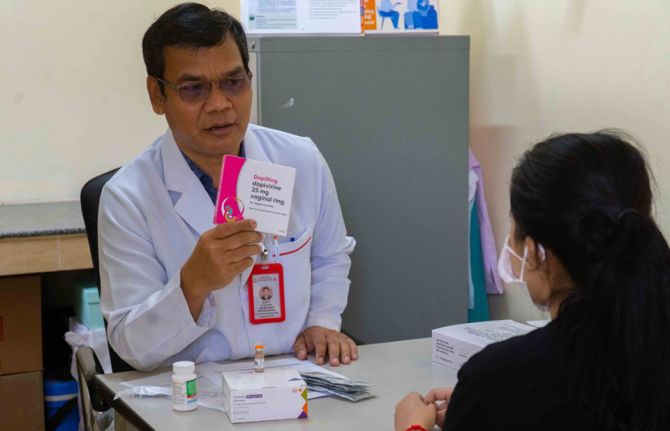
Feature Story
Cambodia becomes the second country in the Asia Pacific to offer long-acting PrEP
04 July 2025
04 July 2025 04 July 2025Borey and Sophea have both used PrEP—a medicine taken every day to avoid contracting HIV. But while this solution has worked, it was not a perfect fit.
Due to his active professional and personal life, Borey sometimes forgot to pack his pills.
“This makes it easy to miss doses, especially when I have unplanned sexual encounters,” he said.
Sophea, a female entertainment worker, is more concerned about her HIV risk with her intimate partner than at work where she uses condoms.
“I don’t fully trust that he is monogamous… he may have other partners. So, it is important for me to protect myself,” she explained.
Still, she says she’s become tired of taking a pill every day for the last six months.
Borey and Sophia are among the first clients in Cambodia to begin long-acting injectable Cabotegravir (CAB-LA), a PrEP formulation administered every two months. With this initiative, Cambodia has become a frontrunner in the Asia Pacific region to roll out long-acting PrEP.
This HIV prevention tool is aimed primarily at groups of key populations at higher risk of HIV infection including men who have sex with men, transgender women, female entertainment workers, people who inject drugs, and couples with one HIV-positive and one HIV-negative partner. This solution is being prioritized for individuals who face challenges with daily pill adherence, those with frequent risk exposure, and those who prefer a more discrete prevention method.
“Offering multiple PrEP options enhances our ability to meet the diverse needs of individuals at risk of HIV,” explained Ouk Vichea, Director of the National Center for HIV/AIDS Dermatology and STD (NCHADS). “Not everyone is comfortable with, or able to adhere, to a daily oral regimen. CAB-LA provides a long-acting alternative that can improve adherence and reduce stigma.”
Offering diverse and innovative HIV prevention solutions is a key strategy as Cambodia embarks on what it hopes is the final chapter towards ending AIDS as a public health threat. The country has made great progress, providing treatment to almost all people it diagnoses and achieving viral suppression among more than 98% of people on antiretroviral therapy.
However, HIV prevention remains a challenge. Every day three people are newly infected with HIV. Nine of every ten new infections occur among people from key population communities (88%). Almost half of new infections (44%) are among young people while 79% are among men.
As a young, gay man, Borey is aware of the risks and welcomes a solution he considers to be more user-friendly.
“With CAB-LA, I don’t have to worry about remembering to take a pill every day. It gives me peace of mind and helps me stay prepared and protected. It fits well with my lifestyle because I have multiple partners and don’t always feel trust. CAB-LA makes things easier, especially in situations where sex is unplanned,” he said.
NCHADS ensures that counseling is client-centered and focuses on providing clear, non-judgmental information about all available PrEP options.
“We discuss the benefits, potential side effects, dosing schedules, and how each option fits into the client’s lifestyle. We also assess their risk profile, preferences, and any barriers they may face. The goal is to support informed decision-making and ensure clients feel confident and comfortable with their choice,” Mr Ouk said.
Patricia Ongpin, UNAIDS Country Director to Cambodia, Lao PDR and Malaysia stressed the importance of choice.
“We should present people with options and ask what fits their lives. When we pair people with suitable prevention solutions, they are more likely to be consistent,” she said.
NCHADS is exploring several innovative approaches to strengthen HIV prevention. One key development is the upcoming launch of the dapivirine vaginal ring-PrEP (DVR-PrEP). This will offer women a long-acting prevention method they can control. Cambodia will be the first country in the region to make this option available.
In addition, the clinic will expand the use of digital tools for adherence support, and community-led delivery models to increase accessibility and trust. They continue to monitor advancements in next-generation PrEP products, including future injectable and implantable options, to ensure the most effective and client-centered prevention tools are available to the people who need them most.
Region/country


Feature Story
Rebuilding lives, one day at a time: A journey from addiction to recovery in Zambia
27 June 2025
27 June 2025 27 June 2025Nkumbu is 24 years old and has just finished his medical school exams in Lusaka. He’s been sober for six months. “I still can’t believe it,” he says. “Six months ago, I was wandering the streets thinking: am I ever going to make it in life? But today, I’m here.”
Growing up, Nkumbu dreamed of becoming a doctor. “There are no doctors in my family. I thought I’d become the first.” But alcohol derailed his journey early on. He began drinking in high school to overcome social anxiety. “My first girlfriend, I met her while I was intoxicated, so I thought this really worked.” What started as weekend partying turned into a habit. Eventually, his dependence led him to drop out of medical school twice.
Raised by his aunt after the death of his parents, Nkumbu recalls her heartbreak the day he was suspended from school for drinking. “She didn’t say a word on the drive home. That should have been the wake-up call. I lost faith in myself and my ability to finish medical school. I was drunkenness, day in and day out—until I found Sanity House.’’
Sanity House: A safe space to heal
Located in Lusaka, Sanity House is a rehabilitation and harm reduction centre offering a safe space for people who use drugs. Through medical, psychosocial, and vocational services, the centre builds a family-like community that helps clients heal and re-enter society with dignity and purpose. Many of the staff, including Daniel Mbazima, House Manager, are in recovery themselves and serve as mentors and role models.
Routine testing at Sanity House reveals an alarming HIV prevalence of 26% among people who use illicit drugs, compared to the national average of 11%. In Zambia, people who inject drugs (PWID) face various vulnerabilities. A 2022 bio-behavioural survey found HIV prevalence among PWID to be 7.3% in Lusaka, 21.3% in Ndola, and 12.2% in Livingstone.
According to UNAIDS, around 30,000 people injected drugs in Zambia in 2023, and 1.3 million people were living with HIV. Yet, access to harm reduction services remains limited due to stigma, criminalization of drug use, and inadequate support. In this context, Sanity House is reducing the risk of HIV infection by helping prevent addiction and giving young people like Nkumbu another chance to get back on track and pursue their life goals.
“Rehab is one day at a time. One day turns to ten, ten turns to a month. And now, six months later, I’m back in class,” Nkumbu says. “The people I used to drink with… some are dead, others are struggling to continue their studies, are in the army or even in prison.”
At Sanity House, Nkumbu found not only a way out of addiction but also restored hope. “The other patients reminded me how great I am. Thanks to them, I began to see it again in myself, to see how far I’ve come and I told myself: I got this.”
Nkumbu is now a youth advocate on Zambian television, sharing his story to raise awareness about youth and substance use. When asked about his first love, now a pilot in South Africa, he laughs. “Maybe she flew past me. I’ve got to get myself together first. I’m trending now, maybe she’s even seeing it.”
Recovery is only possible when communities are adequately supported
Daniel Mbazima, House Manager at Sanity House, has witnessed many lives transformed at the centre. “Lasting change requires sustained community support and investment,” he says “The high rate of substance use combined with a lack of integrated health services is very alarming. We urgently need programmes that link addiction recovery with essential healthcare services, particularly HIV, TB and Hepatitis C prevention and treatment, among others. Stigma remains one of the biggest barriers, preventing people who inject drugs from seeking help. Addressing these challenges demands greater support and financing for interventions like we implement at Sanity House.”
Clinton Kruger, a former client and now peer mentor at the centre, adds: “Recovery is possible. I’m the living proof of that. I want to show the world that there is hope, not only for those struggling with substance use, but also for their loved ones. Don’t give up on us. Sometimes, the care of just one person can be the only light in the darkness that addiction creates. You are not alone. Reach out. There is help, and there is a way forward.”
As we celebrate the International Day Against Drug Abuse and Illicit Trafficking on the theme “the Evidence is Clear: Invest in Prevention” UNAIDS and UNODC call for urgent and coordinated action to decriminalize drug use and possession for personal use and to scale up harm reduction strategies and community-led programmes. Evidence shows that harm reduction, including needle exchange, opioid agonist therapy, and overdose prevention reduces HIV transmission and improves health outcomes. Yet, these services remain underfunded and inaccessible in many countries, including Zambia.
Nkumbu’s story is one of resilience, community, and the power of second chances. “I could have caught HIV, or worse. But I didn’t. I’m lucky. And now I get to help others.”
By working alongside and supporting communities, we can break the cycle of drug abuse and illicit trafficking by addressing its root causes, investing in prevention, and strengthening health, education and social support systems.
Region/country
Related


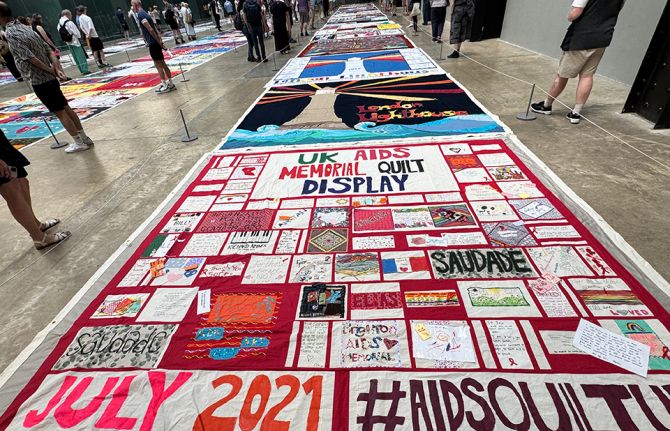

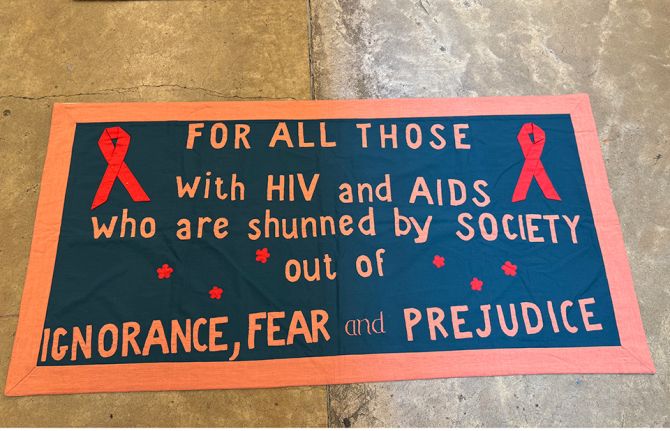
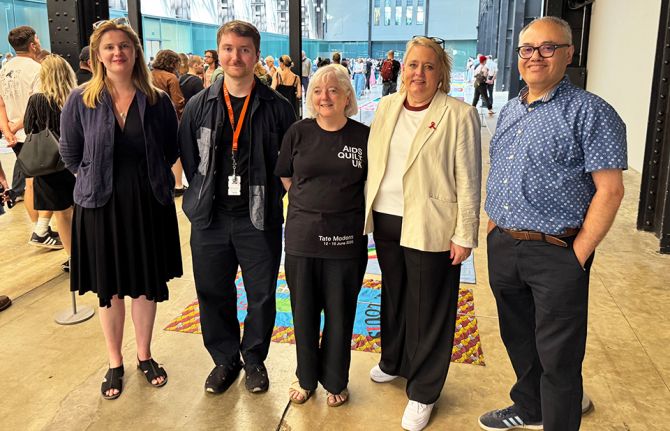
Feature Story
Tate Modern exhibits UK AIDS Quilt, a powerful tribute to people lost to AIDS
26 June 2025
26 June 2025 26 June 2025The Tate Modern art gallery in London paid a powerful tribute to lives lost to AIDS by exhibiting the UK AIDS Memorial Quilt which features hand-stitched panels commemorating people whose lives were cut short by the disease. It is the largest ever showing of the UK Quilt in history.
On Monday 16 June UNAIDS Deputy Executive Director Christine Stegling paid a special visit to the exhibition. “It was beautiful and sombre in equal measures,” Ms Stegling reflected. “I was reminded of the loss we have all experienced. Of the dark times we have come from.”
Created in the 1980s, the UK AIDS Quilt contains 42 panels, each made up of a collection of smaller panels, created by loved ones of those who died of AIDS. The idea of an AIDS memorial quilt started in the United States as a way to commemorate the lives of people who died from AIDS-related causes. It paid tribute to friends and loved ones as sadly, those who died were often not given funerals because either their families rejected them, or funeral homes refused to take their bodies for fear of infection.
Ms Stegling’s visit underscored the importance of remembrance and perseverance, and the need to centre human dignity in public health responses. The exhibition reminds people how far the world has come in the fight against HIV—today, 30 million of the 40 million people living with HIV are on life-saving antiretroviral treatment. However, it also demonstrates profoundly that there is much still to be done to tackle the stigma and discrimination associated with HIV.
Ms Stegling’s visit was part of a broader mission to the UK. In her remarks at the British Group Inter-Parliamentary Union Pride Reception the next day, Ms Stegling warned of the devastating impact of recent funding cuts to foreign assistance, particularly the reductions in US funding and r in UK development assistance which are already undermining progress against AIDS. These cuts included defunding community-led efforts which are critical for reaching all people at risk for and living with HIV.
“Community-led efforts customized to meet the needs of LGBTIQ+ communities were among the first services defunded,” she said, highlighting the disproportionate impact on marginalized groups. UNAIDS estimates that without previous funding levels fully restored, or offset, there could be up to 6.6 million additional new HIV infections and additional 4.2 million AIDS-related deaths.
Despite these challenges, Ms Stegling emphasized the power of communities to drive progress. “Ending AIDS is no longer aspirational—it is achievable,” she told parliamentarians and civil society leaders. She called on the UK to continue its legacy of leadership by investing in equitable access to lifesaving HIV services and by supporting grassroots organizations critical for connecting people to healthcare. “Community leadership, compassion, courage—and solidarity—this is what works,” she said, urging renewed commitment to the 2030 goal of ending AIDS as a public health threat.
Ms Stegling’s UK visit, including her engagement with lawmakers and civil society during Pride Month, served as a poignant reminder that while the fight against AIDS is far from over, it can be with sufficient support for the right approaches. Her presence at the Tate Modern and her powerful advocacy at the parliamentarian reception reaffirm UNAIDS’ call to action: to fund what works, protect those most at risk, and ensure that no one is left behind in the global AIDS response.


